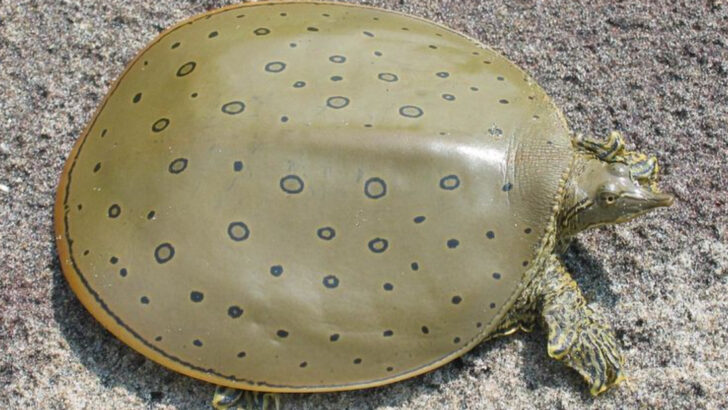Some turtles breathe through their butts. Others survive frozen solid.
Still think turtles are slow and boring? Think again.
These wild reptiles are hiding some of the strangest, coolest, and downright mind-bending abilities in the animal kingdom. We’re talking full-blown superpowers—minus the cape.
One can outrun predators by gliding underwater like a rocket.
Another wears algae like armor.
And there’s one that can stay hidden for years underground, waiting for the perfect moment to reappear.
These aren’t your average shell-dwellers.
They’re survival artists.
Shape-shifters.
Masters of the unexpected.
This list cracks open the shell (sorry, had to) on 12 turtles with talents so wild, you’d swear they came from a comic book.
Ready to meet the mutants of the turtle world?
Let’s go.
Leatherback Sea Turtle
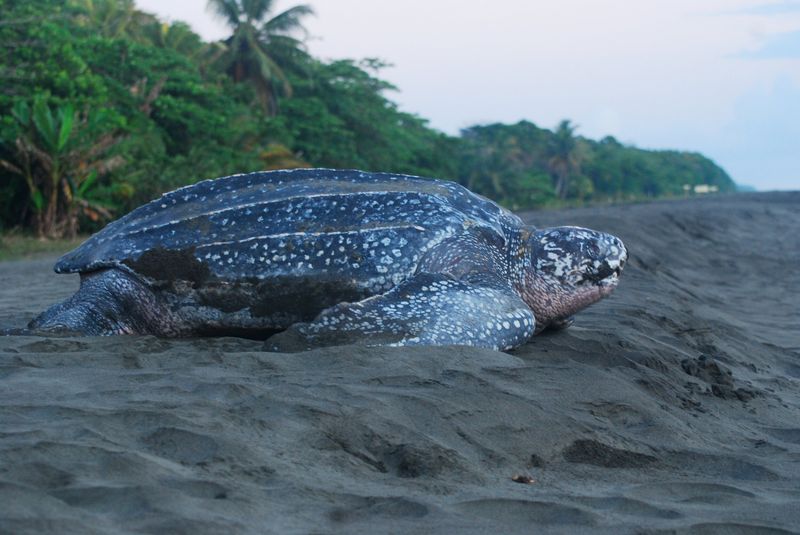
Leatherbacks, the largest sea turtles, possess an uncanny ability to regulate their body temperature, allowing them to venture into colder waters than most reptiles. This adaptation enables them to migrate vast distances across the ocean.
Witnessing a Leatherback gliding through the water is like watching a living submarine silently patrolling its territory. Their diet mainly consists of jellyfish, and their resilience against the jellyfish’s venom is astonishing.
This remarkable tolerance highlights an evolutionary marvel, allowing them to thrive where others might falter. Truly, the Leatherback’s existence is a testament to nature’s ingenuity.
Snapping Turtle
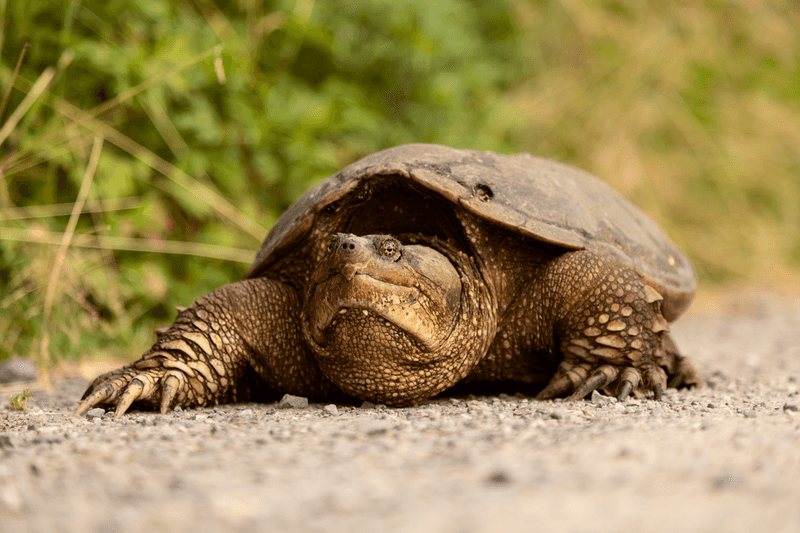
The Snapping Turtle is known for its immense jaw strength, capable of delivering a bite that rivals the power of some large mammals. This formidable adaptation serves as both offense and defense in its murky freshwater habitat.
Observing this turtle’s fierce demeanor is a reminder of the raw power contained within such a seemingly unassuming creature. Snapping Turtles use their robust jaws to capture prey and defend against potential threats with ease.
While they may appear slow on land, in water they are agile hunters, showcasing an impressive duality. Their presence commands respect.
Green Sea Turtle

With their serene gliding through coral reefs, Green Sea Turtles exhibit an extraordinary resistance to various environmental stresses. Their ability to thrive in diverse marine ecosystems is a testament to their resilience.
These turtles, often seen grazing on seagrass beds, contribute significantly to maintaining healthy marine environments. They serve as gardeners of the sea, playing a crucial role in the balance of their habitats.
The graceful movements of a Green Sea Turtle can mesmerize any observer, reminding us of the delicate harmony within the ocean’s depths. Their elegance is unparalleled.
Box Turtle
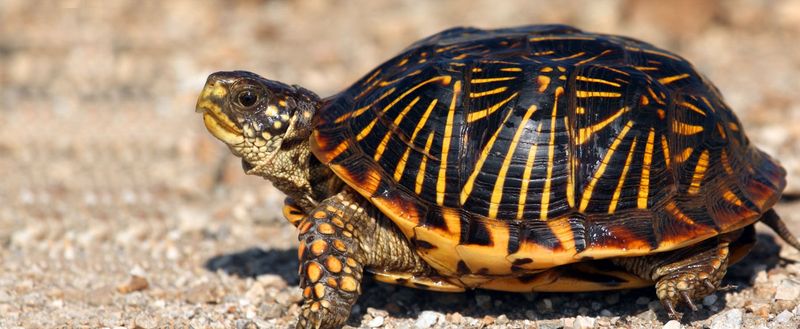
The Box Turtle’s shell is a fortress, offering unmatched protection. Its unique hinge allows the turtle to close its shell completely, safeguarding against predators.
This incredible defense mechanism has fascinated biologists for generations, showcasing evolution’s creative solutions to survival challenges. In its natural forest habitat, the Box Turtle blends seamlessly with the environment.
Though slow-moving, its ability to withdraw entirely into its shell is a spectacular display of natural engineering. The Box Turtle’s design is nature’s ultimate security system, a marvel of biological ingenuity.
Painted Turtle
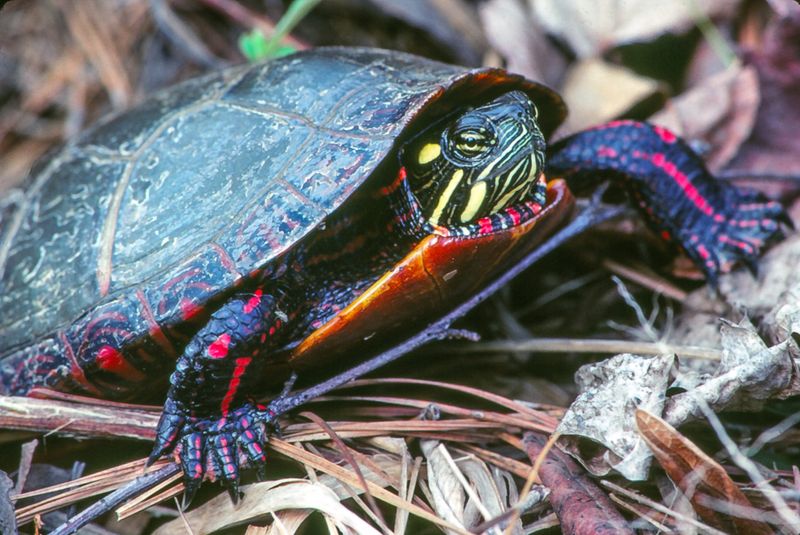
Painted Turtles are nature’s artists, vividly adorned with colorful markings that make them stand out in their freshwater habitats. Their striking appearance is more than just for show; it plays a role in communication and camouflage.
Basking on sunlit rocks, these turtles soak up the sun, which is essential for their metabolism and overall health. Their vibrant shell serves as a canvas that tells a story of survival in the wild.
The Painted Turtle’s beauty is a reminder of the artistry found in nature’s creations, a living masterpiece.
Red-Eared Slider
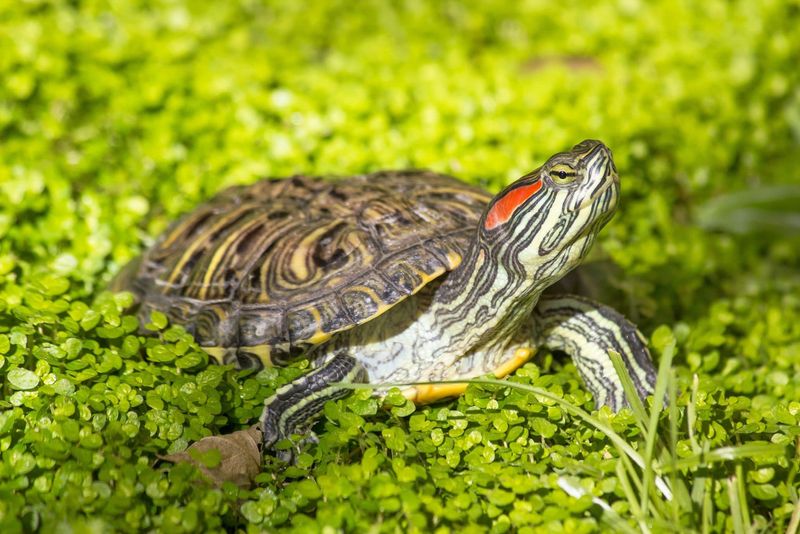
Known for their distinctive red markings behind their eyes, Red-Eared Sliders captivate with their playful energy. These turtles are often seen basking or swimming energetically in ponds and lakes.
Their adaptability to various environments, including urban settings, is a testament to their robust survival instincts. As popular pets, their curious nature endears them to many enthusiasts.
Although originally from the southern United States, their presence is now global, as they have adjusted to different climates. Red-Eared Sliders are extraordinary travelers in the turtle world.
Spiny Softshell Turtle
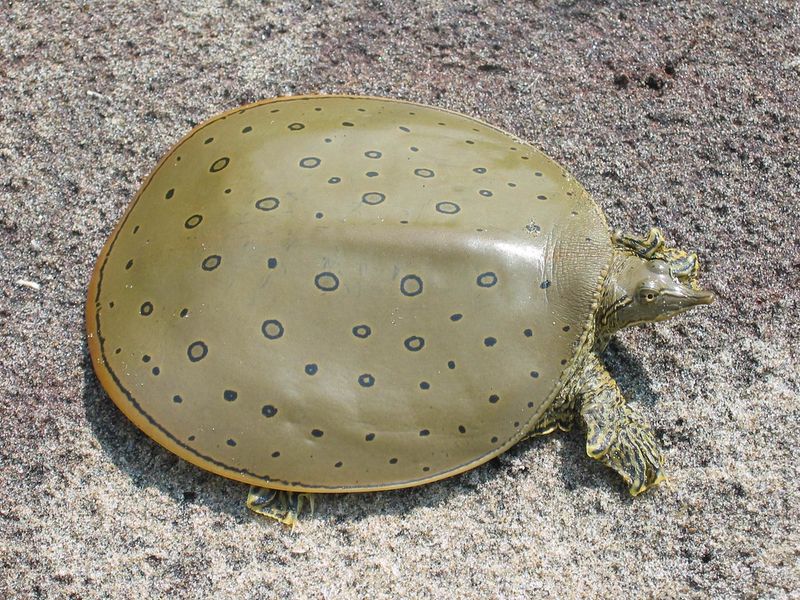
The Spiny Softshell Turtle stands out with its leathery, flexible shell and distinctive spines along the edge. Its ability to bury itself in sand or mud is a remarkable adaptation for ambushing prey or avoiding predators.
With a long neck and snorkel-like nose, it can breathe while mostly submerged, an incredible feat of biological adaptation. This turtle’s unique appearance and behavior make it a fascinating subject of study.
Its presence on riverbanks adds a touch of the exotic, a reminder of the diversity that thrives in freshwater ecosystems. A true wonder of nature.
Hawksbill Turtle

Hawksbill Turtles are the jewels of the ocean, with their intricately patterned shells that were once prized by artisans. Their vibrant appearance belies their crucial role in maintaining the health of coral reefs.
By feeding on sponges, they help control sponge populations, allowing corals to thrive. This delicate balance highlights their importance in the marine ecosystem.
Despite their beauty, Hawksbills face threats from habitat loss and illegal trade. Their conservation is essential to preserving the delicate tapestry of life in tropical seas. Hawksbill Turtles are both beautiful and vital.
Loggerhead Turtle
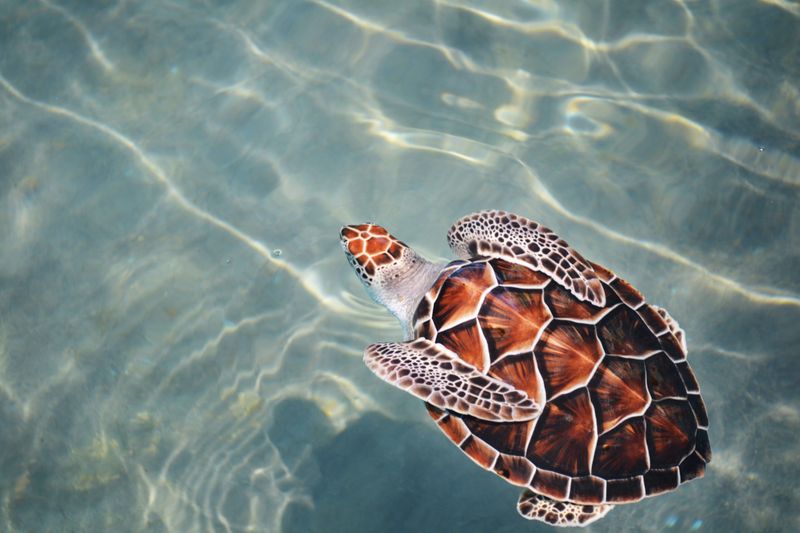
Loggerhead Turtles are named for their distinctive large heads, which house powerful jaws capable of crushing hard-shelled prey. This adaptation is crucial for their diet of crustaceans and mollusks.
Their migratory journeys across the seas demonstrate astounding navigational abilities, often returning to the beaches where they hatched. This homing instinct is a marvel, showcasing a blend of nature’s mysteries.
Their presence in marine environments is vital, as they help maintain the health of the ocean floor. Loggerhead Turtles exemplify strength and endurance.
Kemp’s Ridley Turtle
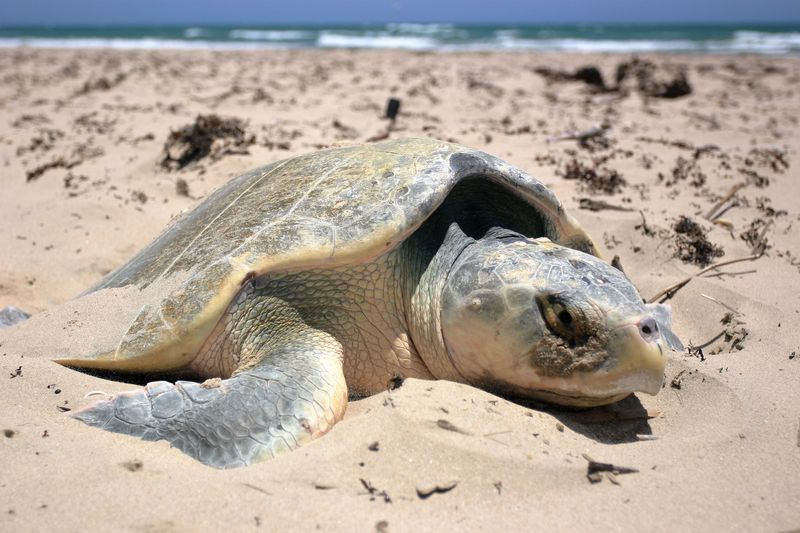
Kemp’s Ridley Turtles are the rarest sea turtles, renowned for their synchronized nesting, called arribadas. This phenomenon is one of nature’s great spectacles, as thousands of turtles gather to lay eggs.
Their small size compared to other sea turtles belies their resilience. These turtles face numerous threats but continue to survive through determined conservation efforts.
Their unique nesting behavior not only ensures species survival but also captivates those lucky enough to witness it. Kemp’s Ridley Turtles are a testament to nature’s perseverance.
Flatback Turtle
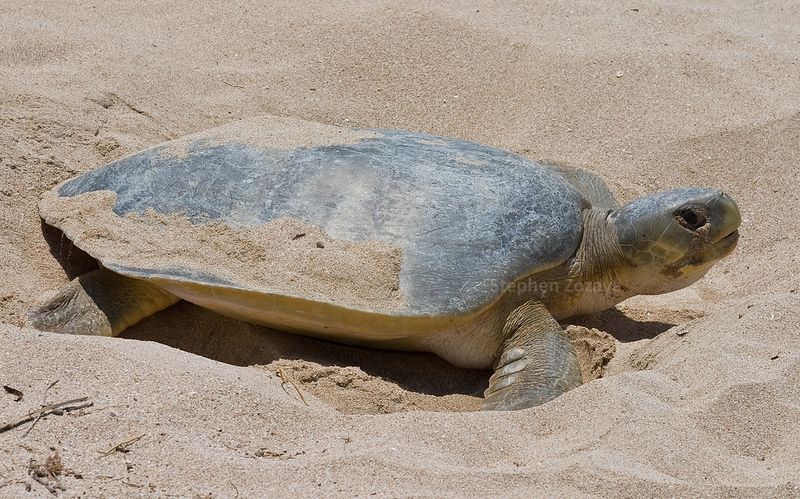
Flatback Turtles, exclusive to Australian waters, are named for their distinctively flat shells. Their nesting occurs mainly on remote beaches, adding a layer of mystery to their life cycle.
Unlike other sea turtles, they have a limited range, making their conservation critical to Australia’s marine diversity. Their eggs are larger than those of other sea turtles, a curiosity that intrigues scientists.
The Flatback’s existence is a reminder of the unique biodiversity found in Australia’s coastal regions. Their quiet presence is a natural treasure.
Olive Ridley Turtle
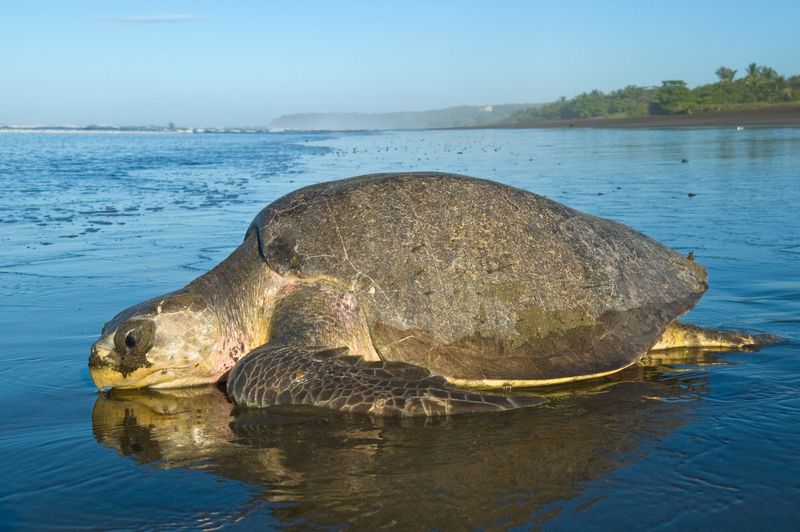
Olive Ridley Turtles are known for their olive-colored shells and mass nesting events, similar to Kemp’s Ridley Turtles. These arribadas are a mesmerizing natural event, drawing attention to the plight of sea turtles.
Their synchronized nesting is not only a survival strategy but also a spectacle that highlights their vulnerability. Conservation efforts are crucial to protect these gatherings.
Olive Ridleys, with their gentle demeanor, remind us of the intricate web of life that ocean creatures weave. Their gatherings are a beacon of hope for their continued survival.

